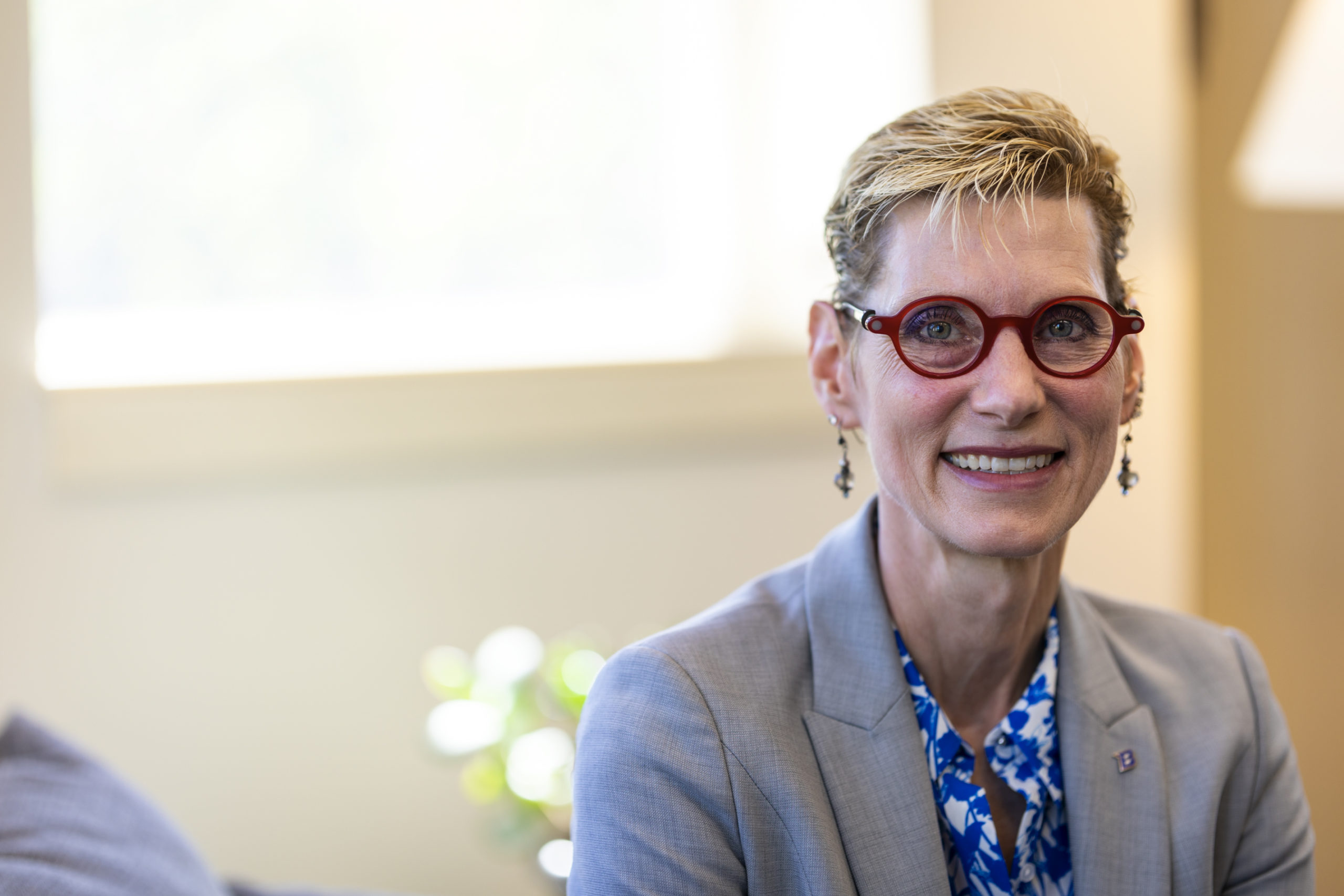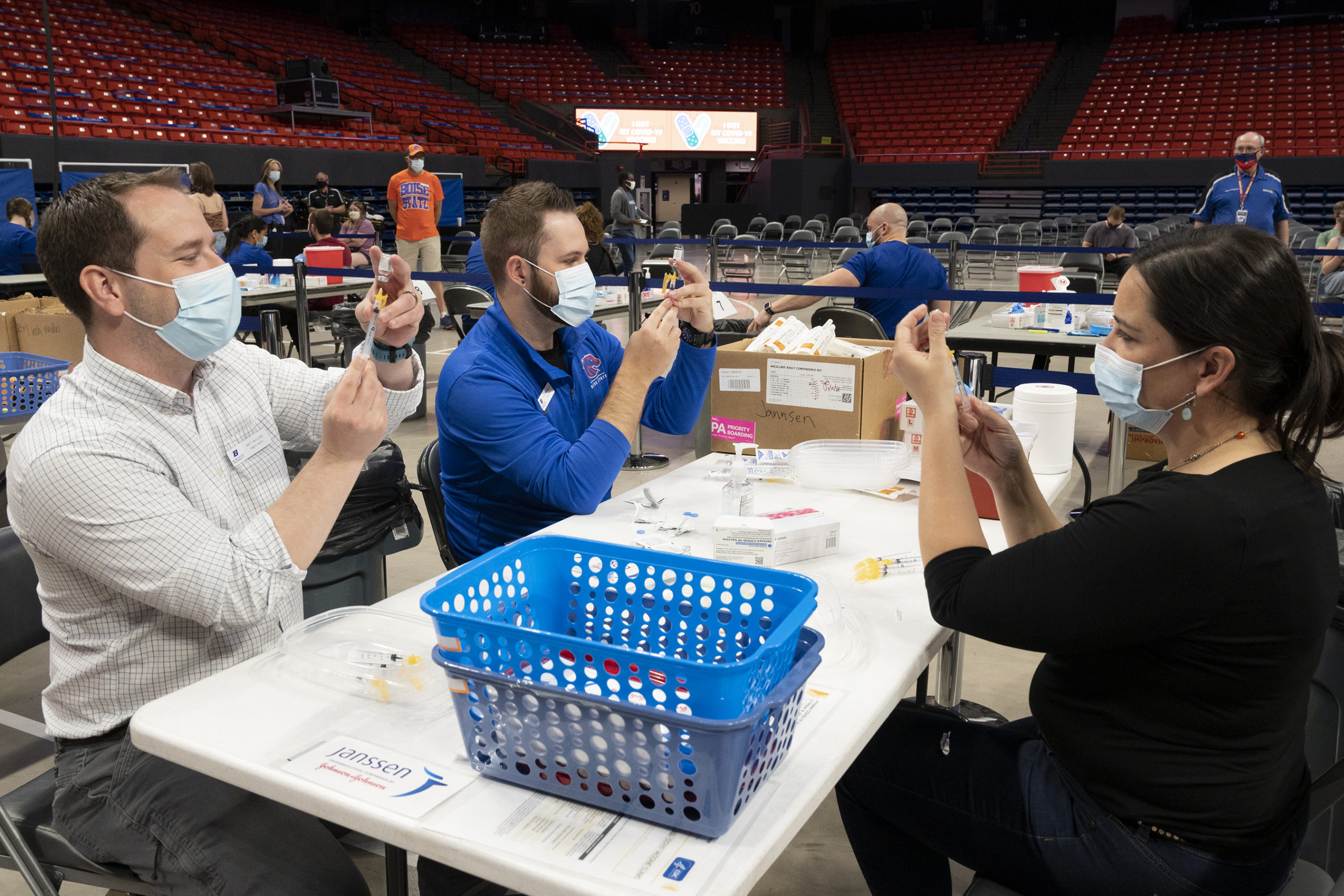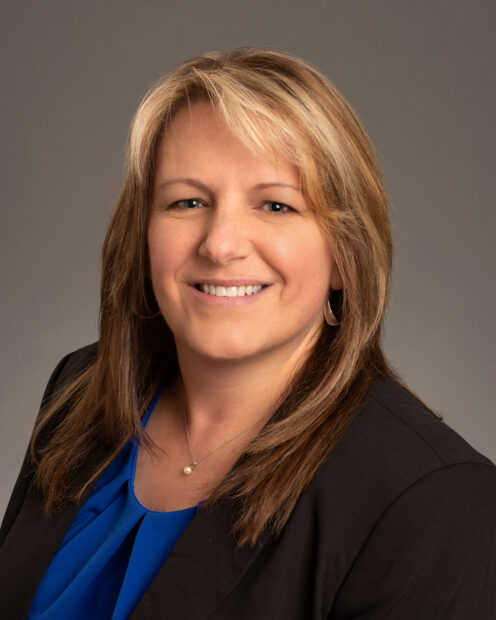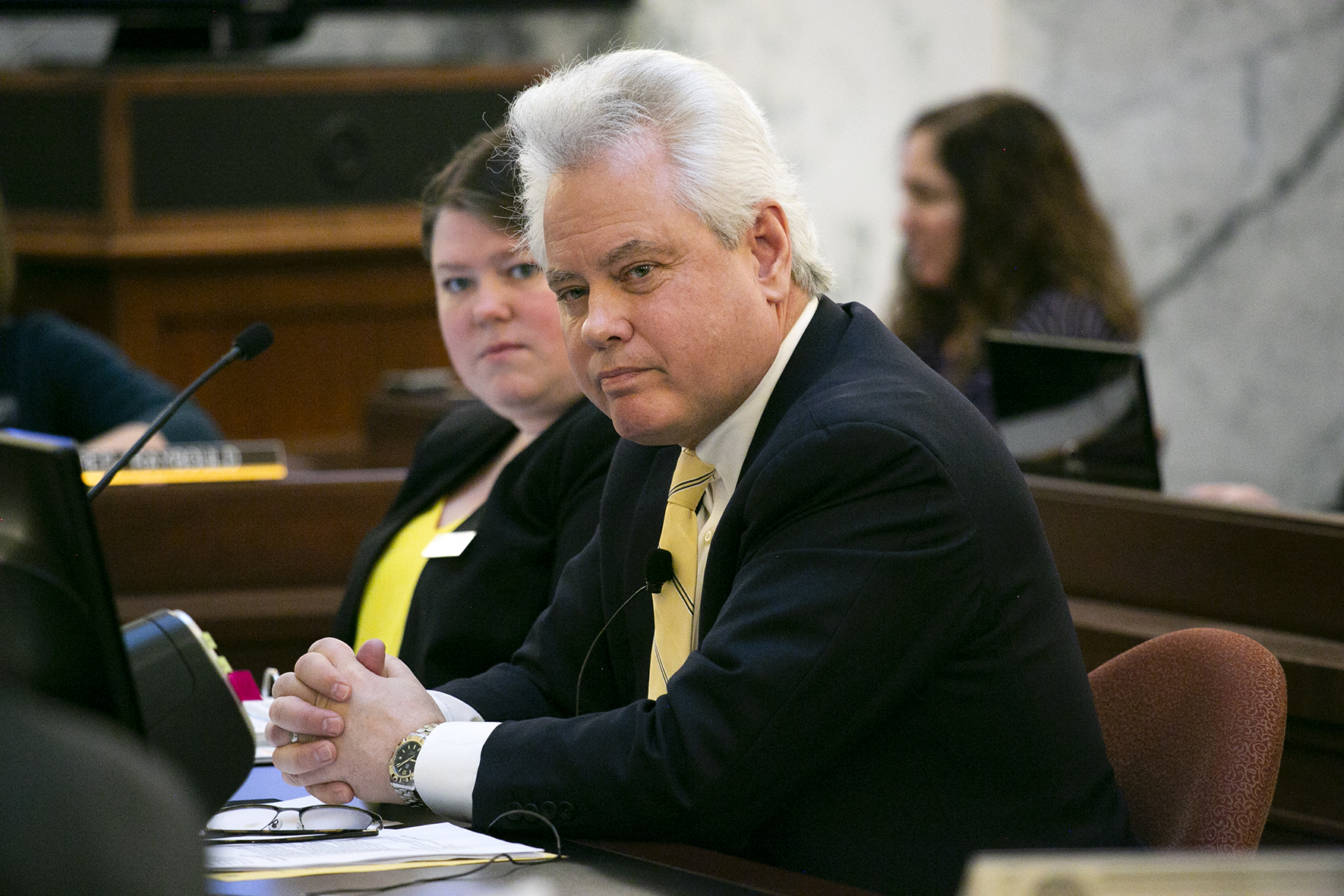Vaccines could help Idaho’s college campuses move past the pandemic.
More face-to-face classes, fewer Zoom sessions. More events and activities, fewer health protocols. More predictability, less uncertainty.
But even if campuses return to normal this fall, that doesn’t mean students will return to campus.
It’s unclear whether Idaho’s colleges and universities will reverse their 18-month enrollment slide — an 8.7% dropoff that translates to a loss of more than 5,000 students.
Many of the early metrics are grim, with ominous implications for the colleges and universities.
Attracting and educating students — the schools’ basic mission, of course — is essential to their bottom line. In 2020-21, the state’s eight public institutions collected close to $354 million in tuition and fees, slightly exceeding the general fund money they received from state taxes. Rebuilding enrollment is a matter of fiscal health, especially as the colleges and universities face scrutiny from a skeptical Legislature.

Amid the pandemic, Idaho’s demographic gaps linger
During the pandemic, Idaho colleges and universities have struggled to recruit students from several key demographics: in-state students, rural students, students from low-income households, and students of color.
These problems don’t appear to be going away:
- The state’s Apply Idaho website allows high school seniors to apply to any or all of Idaho’s four public four-year schools simultaneously. These in-state applications are down by about 17%, State Board of Education spokesman Mike Keckler said in early June.
- University of Idaho Latino student applications are also down significantly — a sign that seniors struggled to navigate the paperwork process during a pandemic school year, said Dean Kahler, the university’s vice provost for strategic enrollment management.
- Rural student applications are down at Boise State. And a lot of that is a function of access: In the middle of a pandemic, it’s tougher for rural students to see the campus for themselves. “So now you’re not even getting the taste,” President Marlene Tromp said. “You’re not even getting the access.”
- New applications for the state’s Opportunity Scholarship are down by about 10%, said Cate Collins, senior research analyst for the State Board. This scholarship is the state’s financial aid linchpin, providing need-based aid for some 7,000 students who stay in Idaho for college.
- As of Friday, fewer than 40% of Idaho high school seniors have filled out the Free Application for Federal Student Aid, a detailed form also required for the state Opportunity Scholarship. A year ago, Idaho’s FAFSA completion rate was 43%. Another troubling sign: As high schools have been forced to move evening “FAFSA nights” from a face-to-face to virtual format, few parents showed up for the online how-to sessions. “Everyone already has Zoom fatigue as it is, let alone trying to do a FAFSA (event) online,” State Board Executive Director Matt Freeman said.
In the face of the enrollment decline, and the grim leading indicators for 2021-22, the State Board and the four-year schools threw the dice this spring. They agreed on a second straight year of tuition freezes in hopes of convincing cost-conscious students to come through the door — or come back after a gap year. The schools first agreed to freeze tuition for Idaho undergraduates in December 2019, just months before the pandemic hit the United States.

The tough job of forecasting the future
Kris Collins remains hopeful. Boise State’s associate vice president for enrollment services says young adults have displayed a lot of grit during the pandemic, even if they sat out the school year. “I just want them to put their grit back into higher education.”

Admissions officials have to bank on hope these days, when they used to be able to rely on hard numbers. Usually, college admissions officials could track applications and acceptances and accurately project fall enrollment — or “yield,” in the vernacular of the industry.
Then came the pandemic.
“Every yield model we have is thrown out the window,” Collins said.
Life is uncertain for admissions officials because life is uncertain for would-be students and their parents.
While application numbers are up slightly at Boise State, and smaller and socially distanced campus tours have filled up quickly, none of that means students will actually show up. Students and their parents want to know if they can expect in-person classes and an open campus experience. All Boise State or other schools can offer are “as-of-now” answers, Collins said.
College and university officials are confident that they will be able to offer more of a traditional campus experience. They’re basing their hopes on the vaccines, which only became widely available to staff and students in the spring. The public colleges and universities can’t require vaccinations — that falls under Gov. Brad Little’s executive order banning state agencies from requiring “vaccine passports.” However, any college employee or student who wants a vaccine will have had plenty of time to get one by August.
But the fact that fall-to-spring enrollment dropped, nationally and in Idaho, suggests that students weren’t sold on how colleges have adapted their campuses and their teaching models to the pandemic. The enrollment slump wasn’t a one-semester fall 2020 phenomenon. So will students come back in fall 2021?
“There’s no really quick turnaround in sight,” said Douglas Shapiro, vice president for research and executive director for the National Student Clearinghouse Research Center in Herndon, Va., during a recent Education Writers Association national seminar.
Whatever became of the class of 2020?
Recruiting 2021’s class of high school seniors is one thing.
But how do colleges reconnect with the high school class of 2020 — students who took a gap year, in huge numbers, amidst a pandemic? (Only 38% of Idaho’s high school graduates went straight to college last fall, down from a pre-pandemic 45% in 2019.)
Boise State is taking an old-school tack, sending postcards to students who applied last year, but never showed up for 2020-21. Boise State’s research suggests that many of these students sat out the year entirely, so the postcards sent a very deliberate message.
“We wanted them to remember what their original vision was,” said Leslie Webb, Boise State’s former vice president for student affairs and enrollment management, who left the university this spring.
At least Boise State can work off a starting point: a mailing list of would-be prospects. Many 2020 graduates have fallen off the recruiting radar. They haven’t taken a college entrance exam in more than a year, and they’ve fallen out of touch with teachers and career counselors who could help them make the transition back to school.
“They’re disconnected now from education,” Shapiro said.
Finding these “lost” graduates represents just part of the challenge. The longer high school graduates put off college, the less likely they are to come back. They might find a job or start a family, while their study skills and academic inclination erode over time.
“We know the data shows that the gap years aren’t usually the student’s friend,” Freeman said.
That makes this fall a pivotal one for the Class of 2020. A chance, and perhaps the last best chance, for these students to get onto campus.
At the same time, this fall represents a chance for colleges and universities to recapture a chunk of enrollment they lost to the pandemic.
“We haven’t forgotten about them, and hopefully they haven’t forgotten about us,” Kahler said.

As the pandemic slows, the political backlash grows
As Idaho colleges and universities struggle to bring back students, they face a fight in the Statehouse. Some lawmakers have criticized the higher education system, saying the schools are advancing a leftist agenda that is tone-deaf to mainstream Idaho beliefs.
This spring, lawmakers cut $2.5 million from the budgets of Boise State, the U of I and Idaho State University. The debate over critical race theory and social justice also reshaped the narrative — as college and university leaders have been continuing to tout the lifelong value of a college degree.
Will the political backlash make it even harder for colleges and universities to grow enrollment after the pandemic, and recruit first-generation students and rural graduates to campus?
“I can’t help but think that it could have a chilling effect on some families and students,” Freeman said.
Freeman notes that Idaho isn’t in a unique position. Colleges and universities across the nation are having to make the case that a college education is worth the time and the expense. “When that’s being challenged, and then you layer on top of that this culture war that’s being waged, that’s not helpful.”
University of Idaho President C. Scott Green believes the backlash is already driving down in-state applications. “We have this narrative out there that higher education doesn’t pay, public money shouldn’t go into higher education because it’s not a good value,” Green said recently. “And as we all know, that’s another false narrative.”
For too long, Tromp says, college and university leaders have not effectively made the case for higher education — because they thought the case was self-evident. Now, as families have to pay an increasing share of the cost of college, they have become skeptical consumers. These factors feed into a controversy that could hurt enrollment on the other side of the pandemic.
“I worry about our ability to bring students here,” Tromp said. “I worry about our ability to bring faculty and staff here to do the work.”
These stories were produced with support from an Education Writers Association fellowship.
This series, at a glance
Monday, June 21: Eighteen months, 5,000 students: Idaho colleges and universities face a deep enrollment decline
Monday, June 21: Why they showed up: Three students tell their stories
Tuesday, June 22: The student experience: adjusting to classes and campus life in a pandemic
Wednesday, June 23: Even as the pandemic recedes, students might not return to campus
Thursday, June 24: Students came from the across the globe — and stayed in Caldwell
